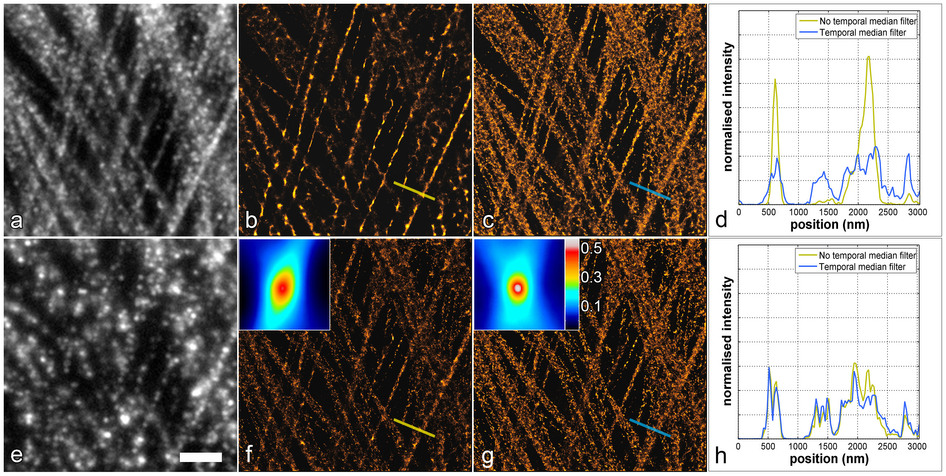Research highlight: Taming the image background beast
The quality of super resolution images obtained by stochastic single-molecule microscopy critically depends on image analysis algorithms. We find that the choice of background estimator is often the most important determinant of reconstruction quality. A variety of techniques have found use, but many have a very narrow range of applicability depending upon the characteristics of the raw data. Importantly, we observe that when using otherwise accurate algorithms, unaccounted background components can give rise to biases on scales defeating the purpose of super-resolution microscopy. We find that a temporal median filter in particular provides a simple yet effective solution to the problem of background estimation, which we demonstrate over a range of imaging modalities and different reconstruction methods.

As an example the GSDIM imaging of myosinIIa independently labeled with Alexa532 (a–c) and Alexa647 (e–g) was analysed. Without the utilization of the temporal median filter, the RapidSTORM reconstruction of the Alexa532 data set shows localizations that are skewed towards regions of high fluorescence (b) and exhibit poor co-localization with the Alexa647 (f) based on Pearson’s cross-correlation analysis (f, inset). Use of the temporal median filter prior to running the localization eliminates these artifacts in the Alexa532 reconstruction (c) and shows higher correlation with the Alexa647 reconstruction (g, inset). Intensity traces (d, h) are normalized to the area under the trace.
Hoogendoorn et al., Scientific Reports 4 , 3854 (2014)